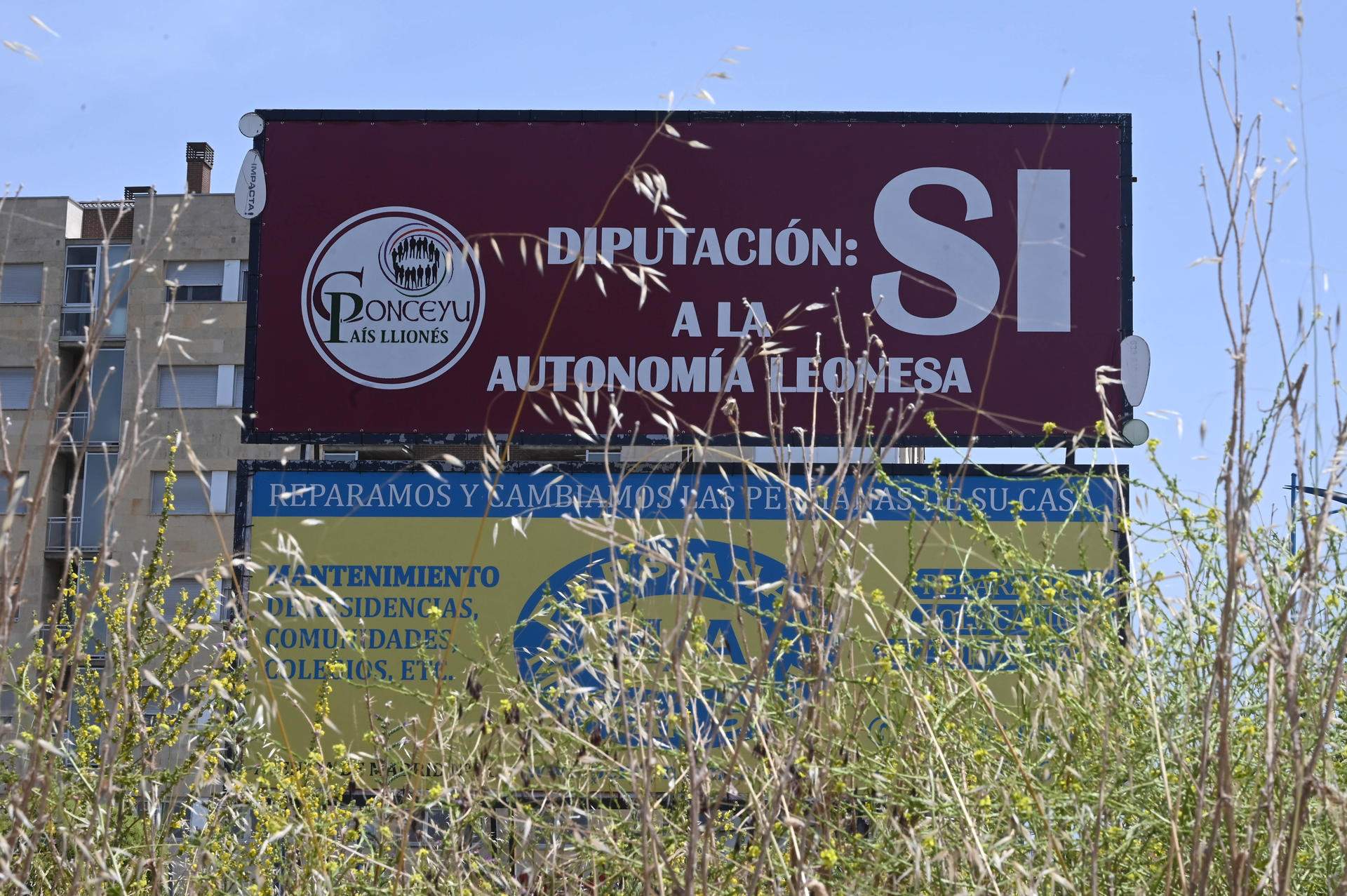Away up there in the interior of north-western Spain, the Provincial Council of León passed a motion this Wednesday in favour of becoming independent from the Spanish autonomous community to which it currently belongs - the giant region of Castilla y León - and establishing its own autonomy, Región Leonesa, the León Region - made up of the provinces of León, Zamora and Salamanca. The mayor of Leon city, José Antonio Díez, of the Socialists, considers the council vote to be "very good news" and has argued that the autonomous community of Castilla y Leon "has not worked in the sense of belonging". So, what is there to know about this phenomenon known as Leonesism, the 'independence' movement that could change the organization of the Spanish state? Let's have a orientative map and a brief review.
Para las y los despistados:
— Abel Aparicio (@abel_aparicio_) June 26, 2024
El País Leonés no está pidiendo nada que no le corresponda y que no tengan, por ejemplo, Cantabria, La Rioja o Madrid, es decir, autonomía propia. Dicen que somos separatistas de Castilla, pero como pregunta @UribeX ¿Qué es exactamente Castilla? pic.twitter.com/M28JCjpgWK
"The Leonese Country is not asking for anything that it is not entitled to and that, for example, Cantabria, La Rioja or Madrid do not have, that is, their own autonomy. They say we are separatists from Castilla, but what exactly is Castilla?" asks Abel Aparicio in a tweet. The 3 provinces of the País Leonés (León, Zamora, Salamanca), coloured in burgundy.
To begin with, you need to know that the León Region, also known as the País Leonés, is the territory formed by the provinces of León, Zamora and Salamanca (the historical territory of León culture and language), which coincide with the Kingdom of León as defined in the administrative division of Spain into provinces carried out in 1833. On the other hand, Castilla la Vella, as the north-western part of the great Castile heartland was known, was drawn to include the provinces of Santander (Cantabria), Burgos, Logronyo (La Rioja), Soria, Segovia and Ávila, as well as Valladolid and Palencia. It was the post-Franco creation of the autonomous communities in 1980 that brought the two regions together to form the community of Castilla y León, without Cantabria and La Rioja which successfully opted to go their own way.
Brief history of Leonesism
Thus, Leonesism is a cultural, social and political movement that defends the recognition of the Región Leonesa, independent of Castile. We find the movement's modern origins between the years 1900 and 1934, when Miguel Bravo Guardia, Miguel Díez Canseco and José Eguiagaray promoted Leonese cultural regionalism in León. The movement was articulated through press articles, festivals such as the Floral Games, the centenary of the Leonese writer Padre Isla and the celebration of 900 years of the Fueros de León - that is, Leon's local statutes - as well as actions such as the adoption of the purple royal banner as León's coat of arms and the organization of a regional library of Leonese subjects and authors - among many other things.
After the Civil War and the Franco regime, the Spanish pre-autonomous process (at the end of the 70s) saw the emergence of numerous Leonesist groups in Zamora, Salamanca and León to claim the creation of an autonomous community of Leon. At the same time, and for the rest of the 1980s, the first Leonese political parties were born. The most important one was the UPL (Union of the Leonese People), still active and with a growing presence in the territory. Also worthy of a mention is PREPAL (Regionalist Party of the Leonese Country). A significant action took place during the build up to the autonomous community elections in April 2023, when the Leonesists put up a Lexit banner – although the electoral commission ordered it to be taken down.
The Leonese autonomous process
In the autonomous elections of 2019, the UPL obtained 10.20% of votes in León (one deputy in the Castilla y León chamber), 0.71% in Zamora and 0.31% in Salamanca. The Leonesist party improved results in the 2022 elections: 21.31% in León (three deputies), 2.60% in Zamora and 0.96% in Salamanca. In the 2023 general elections, the UPL and PREPAL achieved 8.35% in León, 0.67% in Zamora and 0.25% in Salamanca.
With this impetus happening, in 2019 the so-called Leonese autonomous process began, to create an official Leonese autonomous community, breaking away from Castilla y León. Now, the climax of this process has been reached with this week's vote by the Provincial Council of León. At the proposal of the UPL and with the support of the PSOE, the supra-municipal corporation voted in favour of the autonomy of the Leon Region - something that would be perfectly compatible with the Spanish Constitution. In addition, and by surprise, two Socialist ministers defended the result of the vote and have referred to the legitimacy of the territory to be configured within the autonomous community map: they are the transport minister and former Valladolid mayor, Óscar Puente, who had often been opposed to the movement in the past; and the territorial minister, Ángel Víctor Torres. The problem is that this feeling does not seem to be so present in Zamora and Salamanca, so the process could culminate, for the time being, either in the independence of the province of León or perhaps its integration into the neighbouring autonomous community of Asturias.
✅ La Diputación de León aprueba la moción por la autonomía de la Región Leonesa.
— Unión del Pueblo Leonés (UPL) (@UPLeones) June 26, 2024
✅ A favor: 13 (3 UPL, 10 PSOE)
⚪ Abstención: 0
❌ En contra: 11 (10 PP, 1 VOX)#Leonesp #Zamora #Salamanca pic.twitter.com/CT6VS8CR0W
Main image: poster in favor of Leonese autonomy, this Thursday / Efe

